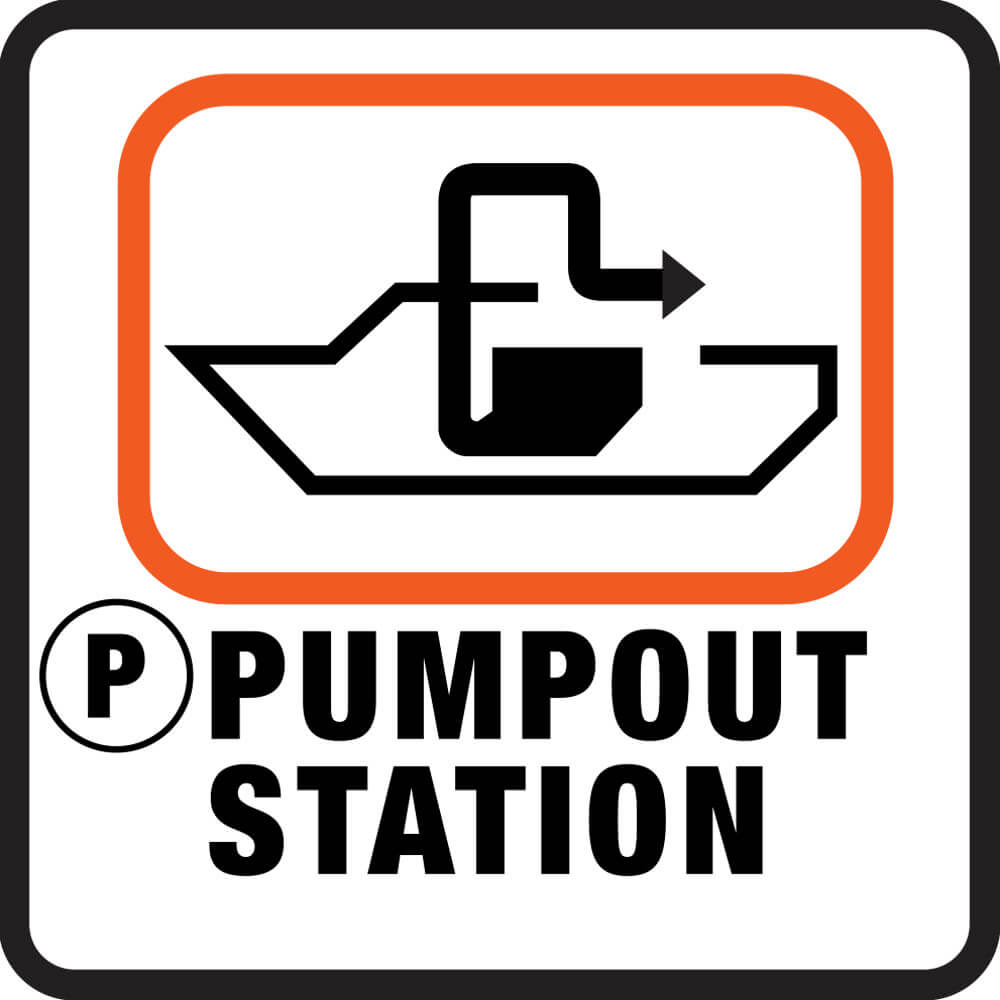Marine Sanitation Devices (MSD) Federal regulations
Recreational boats are not required to be equipped with a toilet. However, the “Clean Water Act” of 1972 (amended 1987) requires that if a toilet is installed, it must be equipped with an operable Marine Sanitation Device (MSD) that is certified by the Coast Guard. Installed toilets that are not equipped with an MSD, and that discharge raw sewage directly over the side, are illegal.
Portable toilets are not considered installed toilets and are not subject to the MSD regulations. But they are subject to disposal regulations that prohibit the disposal of raw sewage within territorial waters (3 mile limit), the Great Lakes, or navigable rivers.

Pumpout Stations
This symbol is used to show boaters where onshore pump out services are located. You will need to locate a marina displaying this symbol if you use a portable toilet or Type III Marine Sanitation Device (MSD) holding tank on your boat.

No Discharge Zones
No Discharge Zones are areas of water that require greater environmental protection and where even the discharge of treated sewage could be harmful. A boat can be equipped with any type of MSD permitted under the regulations. However, whenever a vessel equipped with a Type I or Type II MSD (these types discharge treated sewage) is operating in an area of water that has been declared a No Discharge Zone, the MSD cannot be used and must be secured to prevent discharge. When operating in a No Discharge Zone, a Type I or Type II MSD must be secured in some way to prevent discharge. Closing the seacock and padlocking, using a non-releasable wire-tie, or removing the seacock handle would be sufficient. Locking the door to the head with a padlock or a door handle key lock is another acceptable method of securing the MSD while in a No Discharge Zone.
Generally, all inland waters, freshwater lakes (and similar freshwater impoundments or reservoirs that have no navigable connections with other bodies of water), and rivers not capable of interstate vessel traffic are by definition considered No Discharge Zones, and discharge of human waste is prohibited.
Discharge of Raw Sewage
It is illegal to discharge raw sewage from a vessel in territorial waters (within the 3 mile limit), the Great Lakes, and navigable rivers. However, a Y-valve may be installed on any MSD to provide for the direct discharge of raw sewage when the vessel is outside U.S. territorial waters. The valve must be secured in a closed position while operating in U.S. waters. As described under NO DISCHARGE ZONES, use of a padlock, non-releasable wire-tie, or the removal of the valve handle would be considered adequate securing of the device. The method chosen must be one that presents a physical barrier to the use of the valve.
NOTE: The boundaries of U.S. territorial waters are marked on some nautical charts. Changes to the boundaries are published in Coast Guard Local Notices to Mariners.
Your Responsibilities
If you observe any boat not complying with these regulations regarding water pollution, report it to your local marine law enforcement office or the nearest Coast Guard Marine Safety Office (MSO).
